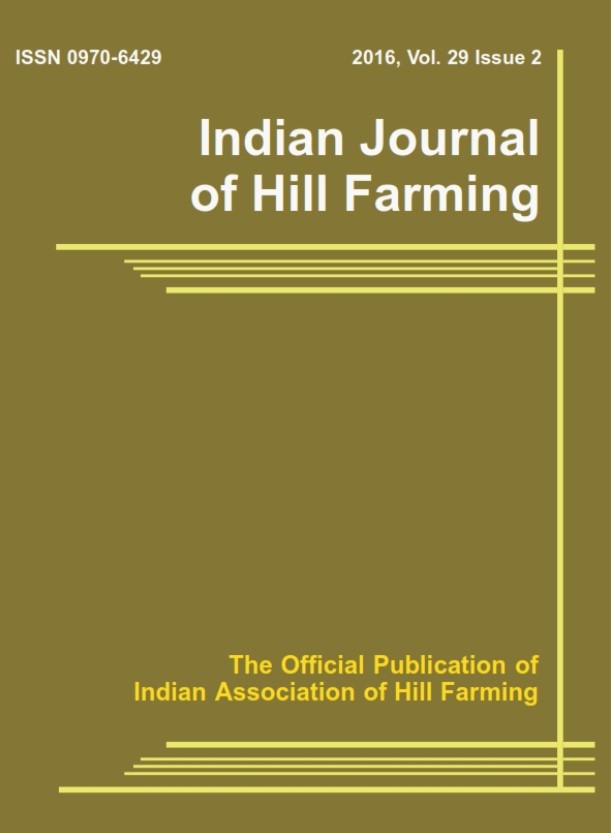Double Transplanting- A Indigenous Technology Practiced By Tribal Farmers to Combat Aberrant Climatic Condition
DOI:
https://doi.org/10.56678/Abstract
The state Meghalaya has diversified topography, altitude and climatic conditions and it is
dominated by tribal indigenous communities. Rice is the main crop in the state during
monsoon season. In the Garo Hills region, a large proportion of rice land is under medium
and low-lying areas, which are subjected to the risk of flood due to heavy rains within a
short span of time. To recover of yield losses, the tribal farmers started practicing of a
indigenous technology i.e. double transplanting. During kharif 2015, sixty farmers
practicing double transplanting system were selected from Garo Hills to assess the benefit
of the technology in real farming situation. The data, collected through survey and focus
group discussion with key informants, revealed that average yield obtained under double
transplanting (41.5 q/ha) was 83% higher than the average yield achieved with single
transplanting. This was primarily due to more vigorous seedlings leading to higher tillering
ability (10-12/plant against 6-7 under single transplanting) with more number of panicles
(240-280/sq. m.). Despite the higher cost of cultivation, double transplanting recorded the
maximum net return (Rs. 30950.00/ha) as well as benefit-cost ratio (1.99).
Downloads
Published
Issue
Section
License

This work is licensed under a Creative Commons Attribution-NonCommercial-NoDerivatives 4.0 International License.




